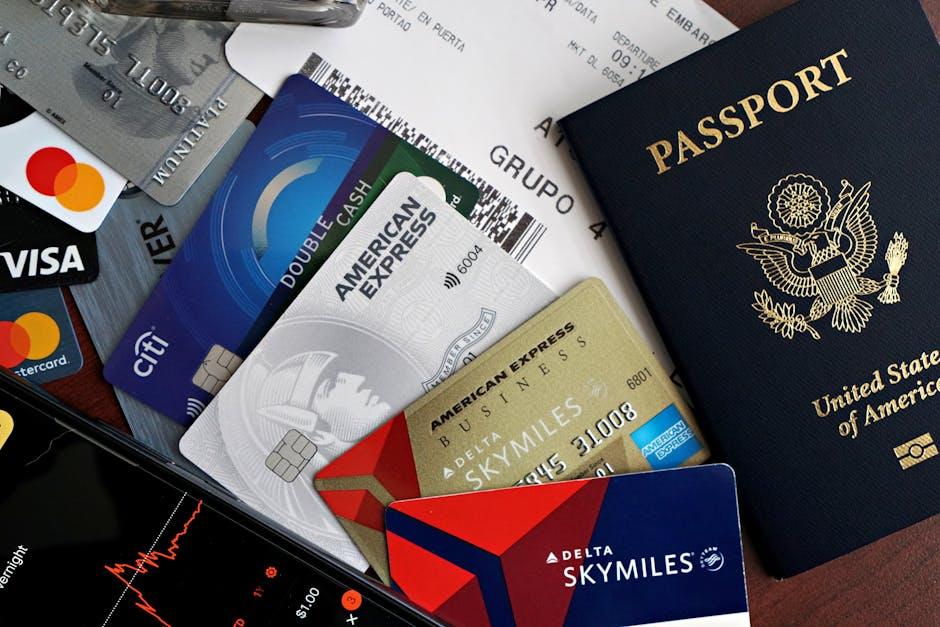In today’s fast-paced financial landscape, credit cards have evolved beyond mere payment tools; they are powerful allies in building and boosting your credit score. Understanding the intricacies of credit card utilization can unlock doors to faster credit enhancements, enabling you to navigate the world of loans, mortgages, and financial freedom with greater ease. This article delves into the hidden strategies and effective practices that can elevate your credit profile, transforming your credit card into a catalyst for financial growth. Whether you’re looking to secure that dream home or simply want to improve your credit standing, mastering these credit card secrets will pave the way to unlocking your financial potential.
Understanding Your Credit Card Utilization for Maximum Impact
Understanding credit card utilization is crucial for keeping your financial health in check and maximizing your credit score. This metric essentially measures how much credit you’re using compared to your total credit limit, and it plays a significant role in your credit report. Here’s how it works:
- Optimal Utilization Rate: Aim to keep your utilization below 30%. This means if you have a credit limit of $10,000, you should ideally use no more than $3,000 across all your accounts.
- Impact on Credit Score: Higher utilization rates may signal to lenders that you are over-relying on credit, which can lower your credit score. Conversely, lower utilization rates can indicate better financial management.
- Calculate Your Ratio: To find your credit utilization ratio, divide your total credit card balances by your total credit limits and multiply by 100. For example, if your total balance is $2,000 and your total credit limit is $10,000, your utilization ratio is 20%.
It’s important to regularly monitor your credit card usage to maintain a healthy ratio. Below is a quick reference table to help you meet your credit utilization goals:
| Credit Limit | Recommended Maximum Balance (30% Utilization) |
|---|---|
| $1,000 | $300 |
| $5,000 | $1,500 |
| $10,000 | $3,000 |
| $15,000 | $4,500 |
To effectively manage your utilization:
- Pay Off Balances Regularly: Consider paying off your balance multiple times throughout the month to keep your utilization low.
- Request Higher Credit Limits: This can lower your overall utilization ratio, assuming your spending habits remain consistent.
- Use Multiple Cards Wisely: Spread out your purchases across multiple credit cards to avoid maxing out any single card.
By keeping these strategies in mind, you can maintain a strong credit utilization ratio that supports your overall credit profile, leading to potential boosts in your credit score over time.

Leveraging Rewards Programs to Enhance Your Credit Score
Utilizing rewards programs effectively can be a game changer for improving your credit score. Here are several strategies to consider:
- Maximize Credit Card Rewards: Choose credit cards that offer rewards aligned with your spending habits. Cards with cash back, points, or miles can provide value while ensuring you pay off your balance each month.
- Maintain Low Credit Utilization: Aim to use less than 30% of your available credit. Regular purchases on your cards, paired with timely payments, enhance your credit score.
- Monitor Your Credit Report: Regularly check your credit report for errors and ensure your rewards usage is reported correctly. Mistakes can harm your score.
- Take Advantage of Sign-Up Bonuses: Many credit cards offer substantial sign-up bonuses. By responsibly meeting the required spending, you can add value to your financial portfolio.
- Balance Monitoring: Use your rewards points and cash back wisely. Opt for using your rewards for balance payments or reducing the outstanding credit balance, which can positively influence your credit utilization ratio.
| Credit Card Provider | Rewards Type | Sign-Up Bonus Example | Key Benefit |
|---|---|---|---|
| Chase | Cash Back | $200 after spending $500 in the first 3 months | Flexible redemption options without fees |
| American Express | Membership Rewards Points | 60,000 points after spending $4,000 in 6 months | Transfer points to travel partners |
| Discover | Cash Back | 5% cash back on rotating categories | No annual fee and automatic redemption |
By actively engaging with your credit card’s rewards programs, you not only earn perks but also build a stronger credit history. Remember, the key is to spend wisely and pay your bill on time each month to enjoy both rewards and a healthier credit score.

Timely Payments and Their Role in Fast Credit Recovery
Timely payments are a cornerstone of improving your credit score, particularly if you’ve faced setbacks in the past. Understanding how your payment history influences your creditworthiness can empower you to make informed decisions moving forward.
Why Payment History Matters
Your payment history accounts for approximately 35% of your credit score, making it the most significant factor. A single late payment can impact your score for years. However, with disciplined practices, you can mitigate past negative marks and pave the way for better credit health.
- Consistency is Key: Making payments on time repeatedly not only helps erase the sting from past late payments but also builds a positive track record.
- Automate Payments: Setting up automatic payments ensures you never miss a due date. Even small missed payments can drastically affect your score.
- Use Reminders: If automation isn’t feasible, use calendar reminders or apps to alert you of upcoming payments.
- Stay Within Your Budget: Maintaining a budget that allows you to meet monthly obligations can help you avoid late payments.
Impact of Late Payments and Recovery
Late payments can stay on your credit report for up to seven years. However, their impact diminishes over time as you demonstrate responsible credit behavior. The faster and more consistently you make timely payments, the quicker your score will start to recover.
| Time Since Late Payment | Typical Score Impact |
|---|---|
| 0-1 Year | Significant drop |
| 1-3 Years | Moderate recovery |
| 3-7 Years | Minimal impact |
| 7+ Years | Considered expired |
Building a Positive Payment History
Incorporating these habits empowers you to rebuild your credit profile effectively:
- Pay All Bills on Time: This includes utility bills, rent, and any loan payments.
- Keep Credit Utilization Low: Aim to use less than 30% of your available credit to maintain a healthy credit score.
- Limit New Credit Applications: Frequent credit inquiries can lower your score, so apply only when necessary.
By focusing on timely bill payments and other positive habits, you can unlock the potential for faster credit recovery and ultimately achieve better financial services, lower interest rates, and improved lending opportunities.

Strategic Credit Card Applications: Timing and Selection Tips
When it comes to optimizing your credit score through credit card applications, timing and selection play crucial roles. Here are some strategies to help you make informed decisions:
- Assess Your Credit Score: Before applying, check your credit report and score. This will guide you on which cards you could qualify for and whether it’s the right time to apply.
- Timing Your Applications: Aim for applications during months when you have fewer inquiries on your report. Multiple applications in a short time can negatively affect your score.
- Consider New Card Promotions: Look for introductory offers, such as cashback or reward points, which can enhance your benefits. Often, cards with these promotions have attractive sign-up bonuses.
- Choose the Right Card Type: Depending on your spending habits, consider if you need a cash back, travel rewards, or a low-interest rate card. Each type can significantly impact your overall finances.
| Card Type | Best For | Considerations |
|---|---|---|
| Cash Back | Everyday Purchases | Look for higher rates on specific categories. |
| Travel Rewards | Frequent Travelers | Check redemption options and fees. |
| No Annual Fee | Budget-Conscious Users | May have fewer rewards but good for keeping long-term. |
Maximize Your Approval Chances: To boost your chances of approval, consider these steps:
- Pre-qualification: Use pre-qualification tools provided by many banks. This allows you to check your eligibility without affecting your credit score.
- Minimal Open Accounts: Keep the number of open credit accounts to a manageable level. Too many can trigger red flags for lenders.
- Maintain a Good Payment History: Ensure all bills are paid on time leading up to your application. A strong payment history is a significant factor in credit scoring.
- Limit New Hard Inquiries: Space out your applications over a few months to avoid too many hard inquiries on your credit report.
Making strategic applications based on your financial situation can lead to faster credit boosts. Stay informed, choose wisely, and watch your credit score soar!

Final Thoughts
Unlocking the potential of your credit card can open doors to financial opportunities and rewards that enhance your spending power and creditworthiness. By understanding your card’s perks, managing payments effectively, and leveraging strategies for maintaining a healthy credit score, you position yourself for faster credit boosts. As you embark on this journey, remember that each small step-whether it’s timely payments or mindful spending-adds up to significant progress. Embrace these credit card secrets, and watch as your financial landscape transforms, paving the way for a brighter, more empowered future.











